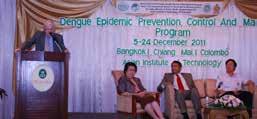
34 minute read
Building Two-Way Capacity: Pioneering a multi-country epidemic
Author:
Faiz Shah, M.D.
Advertisement
Director, Yunus Center at AIT Senior Program Specialist and Head of Development Management, AIT Extension, Asian Institute of Technology (AIT)
Building Two-Way Capacity:
Pioneering a Multi-Country Epidemic Prevention, Control, and Management Program
Natural disasters attract instant attention, and typically, an immediate and intensive response in support of relief and rehabilitation. A quick review of the major natural calamities in recent years brings to mind earthquakes in New Zealand (2011), Haiti (2010) or Kashmir (2005), which together claimed almost 350,000 lives and affected 5 million. Storms and tsunamis in recent memory, such as the ones in Eastern Japan (2011), Bay of Bengal-Nargis (2008), United States-Katrina (2005, and the Indian Ocean (2004) caused another 300,000 deaths, with another 4 million people directly affected.
These are indeed enormous human tragedies. The suffering they caused still lingers, particularly the disease and disability that came in the wake. But disease and disability are not confined to post-disaster situations. They stalk vulnerable populations relentlessly. In fact, disease outbreaks and epidemics kill and disable more people, and have devastated more communities than have natural calamities. A striking illustration comes from the First World War in which 16 million soldiers and civilians perished between 1914 and 1918. The Spanish Influenza pandemic between 1918 and 1919, meanwhile, extinguished 50 million lives between.
History records waves of bubonic plague epidemics killing half of China’s population, then rampaging through India and Central Asia to strike Europe, to annihilate a third of continent’s denizens. Smallpox, known since Pharaonic Egypt, is said to have wiped out the Aztec and Inca civilizations, claiming 60 million lives only in the century before it was finally eradicated in 1977.
Malaria and tuberculosis, known through history as killer diseases, continue to strike down huge populations. In 2012 alone, Malaria attacked 200 million people of whom 600,000 succumbed to it. During the same year, tuberculosis infected 9 million, of which 1.3 million did not survive. The H1N1 swine flu virus may have killed over 300,000 people during 2009-2010. Ebola in its most recent rage through West Africa has taken at least 9,000 lives.
Of the lesser known, but equally malicious public health challenges, is dengue fever. Endemic in 110 countries, dengue infects 100 to 400 million people annually, out of which over half a million can require hospitalization. Dengue can be life-threatening, particularly if it appears in its haemorrhagic or shock-syndrome form. Vaccines are said to be just round the corner, but until then, treatment is limited to ameliorating symptoms as the disease runs its course.
Transmitted through the bite of a common strain of the domestic mosquito, Aedes, which among its particular characteristics, has the ability to survive for months without water, and lay eggs in less than 5 millilitres of liquid, dengue remains a major challenge to public health managers. It has continued to climb higher on the list of high-risk epidemic diseases, with prevalence rising 30-fold since 1960, and could expose almost 2 billion by 2080.
Dengue epidemics have been recorded since the late 1700s, with the disease presently placing an estimated 2.5 billion people at risk for epidemic transmission. In Pakistan, dengue was first reported in 1994, but by 2005, the number of hospitalizations had gone from a mere 3 to just under 4,000, and 40 deaths. In 2011, this number peaked at over 21,000 cases, taking 365 lives before it became apparent that the Punjab was in the midst of the world’s biggest ever dengue epidemic.
The Punjab health department quickly realized how unprepared its departments were for tackling the epidemic, trying to cope with panic referrals from an un-informed and under-equipped primary care system. Typically, media coverage increased public hysteria, straining an already overloaded hospital system to breaking point. Fortunately, health policymakers soon understood that controlling a ubiquitous vector-borne condition cannot depend on hospitalization alone, and that it is already too late to respond once symptoms appear.
Traditional approaches to prevention, control and management are made even more challenging in the case of Dengue because mass diagnostic screening methods remain non-specific and clinical assessment is often non-exclusive. The answer lies in designing and mounting a proactive public health initiative that is community-based, oriented to building mass awareness and behavior-change, and driven forward by inter-sectoral coordination, led by an effective disease surveillance apparatus. What stands in the way of this rather obvious solution is the manner in which healthcare service-delivery is administered. In a
A
number of countries, the typical set up involves operational segregation of key mechanisms that determine the success of public health strategies.
More specifically, mass awareness, behavior-change, preventative measures, surveillance data, clinical triage, medical services and follow up, and most importantly proactive policy administration, are all in their own specific way, critical to the design and implementation of a successful public health program. However, each of these mission-critical elements are almost as a rule, administered as relatively independent, and often mutually de-linked departments, often working under different government ministries, with myriad priorities, budgets and operational competencies.
How AIT Extension acts as a Learning Organization, building internal competence while developing partner competencies
B
C


D
A - Opening program of DEPCAM with Thai Ministry of Public Health, Senior Expert Dr. Suchitra Nimmannitya, Department of Disease Control, Senior Medical Expert Dr. Supachai Ruekngam, Chef-de-Mission Mr. Sajjad Saleem Hotiana, and AIT’s Dr. Willi Zimmermann. B - Dr. Suchitra Nimmannitya, Department of Disease Control. C - AIT Extension Executive Director Dr. Jonathan Shaw. D - Dr. Apinya Niramitsantipong, Thailand Department of Disease Control.
This dichotomy between time-critical need and operational response capacity is what makes epidemics so difficult to respond to, for governments, as well as healthcare providers. The same dichotomy galvanized the development management team at AIT Extension, AIT’s professional development and outreach cluster to design and implement a pioneering capacity-building program that won appreciation from the highest levels in the host country, as well as the World Health Organization (WHO).
That the Dengue Epidemic Prevention, Control and Management (DEPCAM) program has been able to demonstrate AITE Extension’s effective knowledge resource management skills is without question. What it has been able to showcase more importantly, is that learning organizations themselves learn as they teach, ramping up internal competencies for their own staff at the same time as they build client competencies.
An example of AITE’s continuing efforts at building internal capacity to enhance AIT’s development impact is the Dengue Epidemic Prevention, Control and Management (DEPCAM) Program designed for the Government of the Punjab, Pakistan, involving top Dengue experts from Thailand, Sri Lanka, and Pakistan.
Here is a chronicle of events. As AIT’s inter-disciplinary knowledge hub, AITE has, over the years, offered a number of health-care trainings. During 2011, AITE’s Development Management (DM) unit had worked to identify healthcare systems as a priority area for strengthening AITE’s outreach capacity. Experts in peer institutions such as Chulalongkorn, Mahidol, Thammasat, and Chiang Mai universities, the Ministry of Public Health and the Bangkok Metropolitan Administration responded enthusiastically to AITEDM’s proposal for collaboration.
As a result of meetings with counterparts, AITE’s Healthcare Resources Group (HRG) was created, with the aim of co-developing and delivering healthcare courses, including an advanced professional program in healthcare systems administration for the Government of the Punjab, which was a major contributor of participants to AITE’s professional programs in governance and public affairs.
While on mission to Pakistan for introducing the professional programs, an AITE mission was summoned by the Chief Minister’s office and asked for a proposal to combat dengue in Pakistan. AITE immediately presented a strategic capacity-building proposal to the Government of the Punjab. Upon return, AITE mobilized the nascent HRG and confirmed to the Punjab Government that their requirements for an integrated epidemic control and management training program could be met through AITE’s existing expert resources.
The Bureau of Vector Borne Disease Control, Royal Thai Ministry of Public Health was contacted, who immediately identified locations and experts to join the HRG initiative. Professor Siripen Kalyanarooj, head of the WHO Regional Collaborating Centre for Dengue at the Queen Sirikit Institute, recognized pioneer in dengue management, who had visited Pakistan during the epidemic, offered to host a field placement, and also invite key resource-persons.

Likewise, the chief epidemiologist at the Sri Lankan Ministry of Health whose unit had also visited Pakistan, agreed to host a bulk of the field placements in five hospitals around Colombo. The Punjab government deputed a senior member of the Chief Minister’s Dengue Task Force as the academic coordinator for the visiting cohort, and appointed a senior permanent secretary to oversee AITE confirmed program faculty, and submitted a program schema in mid-October 2011.
An advance party from the Punjab comprising the Special Secretary and Director of the Punjab Resource Management Program (PRMP), and the Head of the Chief Minister’s Dengue Research Program visited Thailand to meet faculty and visit training facilities in Bangkok, Chiang Mai, and Colombo, following which the DEPCAM program received approval from the Punjab Government, with a 6-week mobilization deadline.
The DM team immediately formed a coordination team comprising program officers from DM, Public Sector Capacity Building Program (PSCB), and AITE's administration unit, and inducted over a dozen program faculty, in field locations spread over long distances. Each identified location was assigned to a team member, who coordinated with identified government counterparts in ministries in Thailand and Sri Lanka. The Pakistan Embassy in Bangkok, as well as the Pakistan High Commission in Colombo offered active support during the preparatory phase.
The three professional cohorts comprising 126 participants, led by a permanent secretary arrived in Bangkok where they experienced an intensive learning schedule, with classes, field visits, and group work.
At the end of the first week, having completed Workshop I – Dengue Basics: A Public Health Perspective, the participants were moved to their respective field locations as part of three specialized groups, namely Clinical Case Management (Colombo); Research and Surveillance (Chiang Mai); and Behaviour Change and Response (Saraburi).

Participants working on their epidemic control and management plans.
During the second week, AITE hosted a policy-level cohort, comprising members of parliament, healthcare decision-makers, heads of healthcare training organizations and specialized hospitals, as well as representatives from NGOs, media and public service departments. This decision-making cohort went through a busy schedule of meetings and field visits to the public health nerve-centre of the Bangkok Metropolitan Administration as well as the municipality of Nonthaburi.
Opening ceremony of DEPCAM Policymakers Program.

The third week saw all cohorts return to Bangkok from their field placements and attend two more workshops, namely, Workshop II – Planning for Epidemic Control, and Workshop III – Transfer of Learning.

Lecture and discussion with Sri Lanka Ministry of Health Chief Epidemiologist Dr. Paba Palihawadana.
As deliverables for each of these workshops, participants produced drafts of tangible action plans, learning materials, and a brief presentation. These were assessed by senior program faculty in jury sessions. Tests were administered as part of a learning review session at the end of each week, matched by peer ranking through designated group coordinators. The highlight of the last day of the program was a planned live video-conference session where strategies and plans for managing the dengue epidemic were to be presented live to the Punjab Chief Minister. Certificates were distributed in a closing session.
Today, the dengue control strategies developed during DEPCAM in Bangkok, and implemented in Pakistan are recognized as being among the more effective high-impact capacity-building intervention in Pakistan. DEPCAM alumni continue to remain in touch with AITE, and continue to demonstrate the impact of a well thought through capacity-building program. Dr Firdosi Rustom Mehta, WHO Representative to Sri Lanka described DEPCAM as a working model of multi-agency inter-governmental cooperation worthy of wider replication. Apart from the public health impact that AITE was able to spearhead through a well- executed DEPCAM program, the program helped AITE create in-house capacity in an area that remains in high demand.

countries to minimize environmental hazards and their associated health risks, populations are also becoming more exposed to increasing occurrences of disasters in the region. These include recent disasters from climate-induced natural hazards (such as typhoons and floods) and health emergencies related to poor resilience of infrastructure facing natural disasters. The Asian Tsunami left hundreds of thousands of people without access to safe water and sanitation; the outbreaks of SARS and Avian Influenza which later occurred were partly attributed to inadequate environmental sanitation. In addition, with rapid industrial development, the number of technological emergencies, involving chemicals and radiation, is increasing. Economic damage from natural disasters in Asia is high compared with other regions, while investment in infrastructure is low (currently 3-4% of GDP). All these emergencies threaten human life and public health while recovery following disasters remains a challenge, a key reason being that interventions often do not address underlying drivers of vulnerability such as political marginalization and insecure rights. Building resilience to disasters requires actions across sectors and administrative boundaries, and special attention to the disempowered poor. Infrastructure
Sea Erosion in India
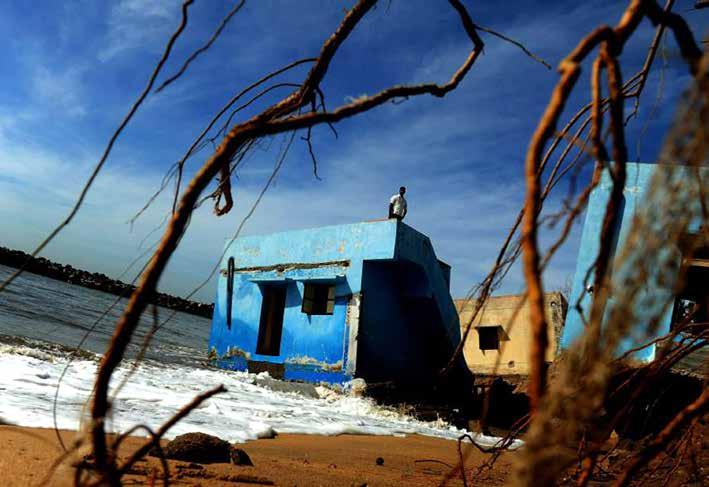
Insights for Climate Resilient Infrastructure
Author:
Marco Silvestri
Programme Specialist, AIT Regional Resource Centre for Asia and the Pacific (RRC.AP) W hile there are efforts being made within Asian
SL Shanth Kumar, 2014 plays a key role as it is required all the time among every human community. Adequate and robust water supply and sanitation provision are fundamental to resilient development; infrastructure can provide shelter from disasters and ensure transportation and communications for effective response. Climate-related risks are not entirely new, but rather more severe and/or more frequent iterations of long-standing risks. Infrastructure solutions should therefore be safe-to-fail, and not assumed to be fail-safe. Vulnerability assessments need to be incorporated into project feasibility studies. Transport limitations in the Mekong Delta are a significant constraint on trade and development; ADB feasibility studies to increase transportation speeds suggested building several bridges. Climate change poses significant risks to such infrastructure, and governments have adjusted designs based on vulnerability assessments – for example, by increasing anticipated flood levels.
Urbanization has direct impacts and strong links with vulnerability and resilience. Millions of residents in coastal urban areas are increasingly vulnerable to disasters, and many local governments do not have the means to build protective barriers. The alternative is to think about infrastructure planning in a different way, investing to build infrastructure in rural areas in order to reverse certain
patterns of rural-urban migration. This transformative strategy in migration processes is important especially in addressing the way urbanization transforms ecological landscapes and ecosystems, in addition to movements of people and resources. Ecosystem-based adaptation is in fact an int eresting alternative to hard infrastructure. Green infrastructure (GI) is an interconnected network of open and green spaces, both natural and designed, that can provide multiple functions and services such as water and air purification, aesthetics, cultural and socio-economic benefits, recreation, and wildlife habitats. It is important for water-related adaptation, as it allows for increased infiltration and reduces runoff (and thus, flood risks).
Resilient infrastructure can then be identified by several attributes: 1) independence, decentralization, and renewable technologies, 2) resource efficiency across the full life-cycle, 3) international standard designs to mitigate risks, 4) green infrastructure, 5) locally based implementation modalities, 6) avoidance of maladaptation, 7) rapid recovery capacity, 8) safe failure intended as being able to fail safely, without triggering a cascade effect, and 9) ability to reorganize, adapt and shift. Multi-hazard risk assessments should be a useful tool to gauge the resilience of the region’s infrastructure; more difficult but also important to assess are the interdependencies between infrastructures. It is crucial to ensure that engineers as well as infrastructure owners and managers consider climate change as an integral part of planning, designing, constructing, operating, maintaining and rehabilitating civil infrastructure, planning ahead for likely climate-induced disasters. Capacity building is necessary to increase and create skills among the different stakeholders, involved in both the technical and policy/planning aspects of infrastructure development.
With contributions from Jonathan Shaw, Ph.D., Director, AIT Extension, Asian Institute of Technology and Deputy Director, Regional Resource Centre for Asia and the Pacific (RRC.AP).
The Asia Pacific Climate Change Adaptation Forum is among the largest climate change adaptation events in the Asia-Pacific region. Since 2010, four Forums have been co-organised by the Asia Pacific Adaptation Network (APAN). APAN operates through its regional hub located in Bangkok and its four core partners which are the Institute of Global Environmental Strategies (IGES), the Stockholm Environment Institute (SEI), the United Nations Environment Programme (UNEP), and AIT’s Regional Resource Centre for Asia and the Pacific (RRC.AP). The insights provided by the authors are reflective of the knowledge exchanges that transpired among the speakers and participants around the theme of climate resilient infrastructure.
Find out how much you know about Ebola on page 22.
Answers: How much do you know about Ebola?
1. No 3. Yes 5. No 7. No
The Asian Institute of Technology (AIT) welcomed the new President, Prof. Worsak Kanok-Nukulchai, on 17 July 2014 during the annual AIT
This three-day event focused on extreme loadings on concrete structures in response to the natural disasters the Philippines experienced from September to November 2013. a.concept’14 featured timely presentations from renowned structural engineers in the Philippines. Dr. Naveed Anwar accepts certificate of appreciation from ASEP The keynote speaker of the event President Carlos Villaraza was Hon. Alfredo Arquillano, Jr., The Association of Structural Engineers of the Vice-Mayor of San Francisco, Cebu and is an acPhilippines, Inc. (ASEP) held its 4th ASEP convenclaimed UNISDR Champion “Making Cities Resiltion on Concrete Engineering Practice and Techient.” He shared detailed about his winning work nology (a.concept’14) with the theme, “Extreme “Purok System” that empowers local communities Loadings on Concrete Structures,” on 22-24 May in reducing disaster risks and adapting to climate 2014 at Century Park Hotel, Manila, Philippines. change. of licensing rights to Prashak for use of such developed and protected intellectual property in designated countries/ regions. The MoU stipulates that AIT grant licensing rights to Prashak for use and deployment of the intellec(L-R) Dr. Siddarth Jabade, Dr. Praful Naik, Prof. Worsak Kanok-Nukultual property protected Habitech chai, Dr. Naveed Anwar, Engr. Gyanendra Sthapit during the MoU Technology in commercial projsigning ects, apart from promoting the The Asian Institute of Technology’s Habitech technology for securing potential Center, through AIT Consulting, signed a Memprojects in India and other countries. Prashak has orandum of Understanding (MoU) with Prashak since then filed the core patent application on Techno Enterprises, India. This collaboration behalf of AIT and is also responsible for actively between AIT Consulting/Habitech and Prashak maintaining AIT’s Intellectual Property Rights is in terms of joint participation in generating, on the novel cost-effective sustainable housing creating, and developing intellectual property technology in all countries where the patent apand protection of such intellectual property by filplications will be filed for protection of the inteling and maintaining of patents and other forms of lectual property. Prashak’s CEO, Dr. Praful Naik is intellectual property protection apart from grant also one of the co-inventors of the novel housing Board of Trustees meeting .
Prof. Worsak is the 7th President was will serve a term of four years. Prior to his appointment, Prof. Worsak served as AIT Interim President since 1 July 2013 and had also served as Acting President from 13 February - 3 March 2013, and then from 1 April - 30 June 2013.
Prof. Worsak is the first AIT alumnus, first Asian, and first Thai national to be selected as the president of AIT in its fifty-four year history. In his highly accomplished career, Prof. Worsak served AIT in a number of capacities. He served as Dean of the former School of Civil Engineering and was the founding Dean of the School of Engineering and Technology. Prof. Worsak also served as AIT Vice President for Resource Development for a period of four years beginning in July 2009.
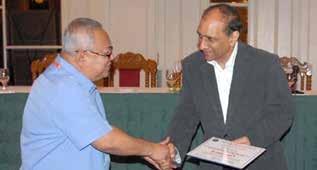
May 2014 Speakers presented topics such as the results of the investigation of historical structures after the Bohol earthquake, review of school buildings after the Bohol earthquake, seismic analysis and retrofitting of concrete buildings, strengthening method of concrete members, storm surge-wave inundation on the typhoon Yolanda (Haiyan) field survey, updated wind zone and contour maps: adaptation strategies for extreme wind speeds, among others.
One of the speakers, Dr. Naveed Anwar, Executive Director of AIT Consulting, discussed the strategies and techniques for seismic risk reduction of school buildings in developing countries. Dr. Naveed, while in the in the Philippines, also met with UNESCAP and Hilti Foundation representatives to discuss collaborative partnerships in developing strategic solutions for sustainable and disaster-resilient buildings.
AIT Partners with Prashak Techno Enterprises for Intellectual Property Rights of Innovative Habitech Technology Solution in India and Other Countries

Aug 2014 technology solution. AIT and Prashak are currently collaborating on a prospective project in Nigeria which will utilize the innovative Habitech building technology solutions in a wide-scale community-level application.
This unique partnership between Prashak and AIT Consulting through Habitech was initiated by Dr. Siddarth Jabade who was previously the Director of AIT’s Innovation and Intellectual Property Rights, housed at AIT Consulting. Under the technical guidance of Engr. Gyanendra Sthapit, the Habitech Building System is now increasing applications and potentials for adaptations into novel and innovative building technology solution that is green and sustainable, disaster-resilient, and durable. The key to the solution’s value proposition includes focusing on using simple, replicable techniques, and local resources while remaining cost-effective.

The Computers and Structures, Inc. (CSI), USA, in collaboration with the Asian Center for Engineering Computations and Software (ACECOMS) through AIT Consulting, Asian Institute of Technology (AIT) brought the Theory and Practice of Performance-based Design (PBD): The Future of Earthquake Engineering to Thailand. This world class event was previously held in San Francisco, New York City, Los Angeles, and Shanghai for the benefit of the building and construction industry and the engineering professionals in the region.
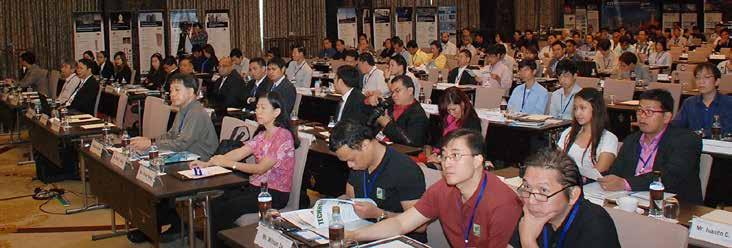
The seminar, held on 7 August 2014 at the Sofitel Bangkok Sukhumvit, attracted more than 150 participants from 72 organizations from countries including Cambodia, India, Lao PDR, Myanmar, Philippines, Singapore, and Thailand.
From left: Syed Hasanain Muzami, Executive Vice President, CSI; Dr. Naveed Anwar, Executive Director, AIT Consulting; Marilyn Wilkes, Senior Vice President, CSI; Ashraf Habibullah, President and CEO, CSI; Dr. Nazim Latif, Commercial Counselor, Embassy of Pakistan to Thailand; and Prof. Sivanappan Kumar, Vice President for Academic Affairs, AIT
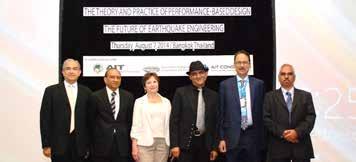

Dr. Naveed Anwar, Executive Director, AIT Consulting welcomed the participants of the seminar and introduced the keynote speaker Ashraf Habibullah, President and CEO, CSI.
Mr. Ashraf Habibullah, President and CEO, CSI, expressing his invaluable views on seismic safety and tall buildings during the seminar.
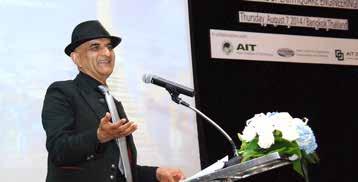
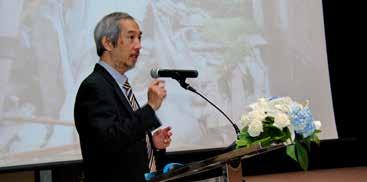
Prof. Pennung Warnitchai, AIT School of Engineering and Technology opened the seminar with a presentation of the latest structural engineering research being conducted at AIT concerning earthquakes and wind. He also discussed the seismic risks in Thailand and the region, as well as the various work of AIT researchers to improve designs to mitigate the impact of these natural hazards.
Green Technology Workshop 2014 Features Solutions, Technologies, and Best Practices for Green Building and Manufacturing

Participants who attended the workshop came from recognized organizations including Betagro Group, Chevron Thailand Exploration and Production, Ltd, Dinthong Corporation Co. Ltd, FSE Consultant Co. Ltd., SCG Building Materials Co. Ltd, Tawan Energy Co. Ltd, Regional Resource Centre for Asia and the Pacific. Limited seats were also provided to selected students from the School of Environment, Resources and Development (SERD) and School of Engineering and Technology (SET), AIT.

The Asian Institute of Technology (AIT) organized a focused event on green technology building on a similar topic that was discussed during the AIT Technology Event held in 2013.
The Green Technology Workshop 2014 was held on 28-29 August 2014 at the AIT Conference Center to provide a platform for both public and private sectors in the field of buildings and manufacturing industry to discuss, interact, network, and discover innovations and best practices in policy, and technology, and best practices to achieve holistic success in sustainability efforts.
The workshop featured several presentations from renowned experts in the field of energy, environment, and green building including: Dr. Brahmanand Mohanty, Visiting Faculty, School of Environment, Resources and Development, AIT; Dr. Prasad Modak, Executive President, Environmental Management Centre LLP and Director, Ekonnect Knowledge Foundation, India; Dr. Atch Sreshthaputra, Executive Committee, Thai Green Building Institute and Assistant Professor, Chulalongkorn University, Thailand; and Prof. Chettiyappan Visvanathan, Dean, School of Environment, Resources and Development, AIT. Prof. Sivannapan Kumar, VP for Academic Affairs, AIT, joined as one of the panel experts along with Dr. Modak, Prof. Visvanathan, Dr. Sreshthaputra, during panel discussion and Q&A session.
Environmental management expert Dr. Prasad Modak, Executive President, Environmental Management Centre LLP and Director, Ekonnect Knowledge Foundation, India presented three topics: green evolution, how to adopt management systems in organizations, and design and manufacturing for sustainability. Energy management expert Dr. Brahmanand Mohanty covered topics such as managing resources using integrated approach to energy and water conservation. He presented several case studies to provide participants with clear understanding on the importance and benefits of green practices. Environmental Engineering Expert Prof. Chettiyappan Visvanathan, Dean, School of Environment, Resources and Development, AIT gave two presentations. The first presentation was on managing waste and emissions from manufacturing industries and building while the second focused on industrial symbiosis (eco-industrial cluster). Green building expert Dr. Atch Shresthaputra, Executive Committee, Thai Green Building Institute and Assistant Professor, Chulalongkorn University, Thailand explained the emerging green process/system called the Building Information Modeling (BIM) that the building industry is now adopting to achieve holistic success in green design and construction.
Prof. Sivannapan Kumar, VP for Academic Affairs, AIT, joined as one of the panel experts along with Dr. Modak, Prof. Visvanathan, Dr. Sreshthaputra, during panel discussion and Q&A session moderated by Dr. Mohanty. In collaboration with Ekonnect Knowledge Foundation, India, the workshop also featured two parallel field visits wherein participants were provided a choice between visiting either the Bangpa-In Industrial Estate or the Thai Health Promotion Office. In Bangpa-In Industrial Estate, participants learned the practical aspects covered previously specifically in managing wastewater and industrial emissions. In Thai Health Promotion Office, a LEED (Platinum) certified building, participants learned various bio-climactic design and green building features.

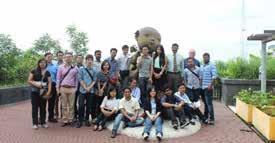
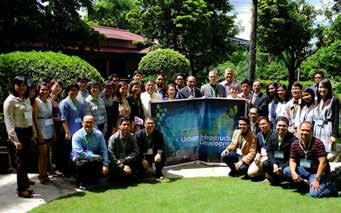
The United Nations Economic and Social Commission for Asia and the Pacific (UN ESCAP), in collaboration with the Department of Science and Technology (DOST), Philippines conducted the National Workshop on Sustainable Urban Infrastructure Development in the Philippines on 10-11 September 2014 at Dusit Thani Hotel, Manila. This workshop is part of a series of capacity building activities targeting policy makers in developing countries in the region involved in infrastructure design and planning, especially water and energy infrastructure. The capability building Myanmar Engineering Society (MES) hosted the “Conference of the ASEAN Federation of Engineering Organizations” (CAFEO-32) held on 9-12 November 2014 at Sedonoa Hotel, Myanmar. CAFEO is an annual conference organized by the distinguished ASEAN Federation of Engineering Organizations, with one of the member organizations selected as host. The conference’s theme this year focused on integrated solutions for energy, transport, and Speakers Mr. Edilberto Paradela, Regional Director, Department of Science and Technology Region 7; Dr. Carol M. Yorobe, Undersecretary for Regional Operations, Department of Science and Technology; Dr. Donovan Storey, Chief, Sustainable Urban Development Section, Environment and Development Division, ESCAP; Hon. Mr. Mario G. Montejo, Secretary, Department of Science and Technology; Dr. Ram Tiwaree, Economic Affairs Officer, Sustainable Urban Development Section, Environment and Development Division, ESCAP; Mr. Cris Cyril C. Abbu , Architect, Chora Design and Architects, and ESCAP resource person; Ms. Sakai Yuko, Japanese International Cooperation Agency, Mega Cebu; and Ms. Benita Ochoa Regala, National President United Architect, National Housing Authority of the Philippines; and Dr. Naveed Anwar, Executive Director, AIT Consulting with the participants after the
activity is one of the key activities for the project “Pilot Implementation of Low Carbon Green Growth Roadmap for Asia and the Pacific” targeting Mongolia, Nepal, the Philippines, and ASEAN countries. Emphasis on enhancing the capacity of policy/decision-makers in developing countries in the region was prioritized to assist in formulating and applying policy options that improve the quality of growth and formulate and apply policy options that help achieve internationally agreed development goals (IADGs) and millennium development goals (MDGs) in the area of water resources management (UNESCAP, June 2014).
Myanmar Engineering Society Hosts the CAFEO 32
In line with this, UNESCAP engaged the services of the Asian Institute of Technology (AIT) through AIT Consulting (AITC) to assist in developing a concept paper that would link the concept of sustainability to disaster-resiliency in school buildings and further incorporate these priorities in updating building codes for schools. Disaster Risk Management Expert, Dr. Naveed Anwar, Executive Director of AITC, presented the concept paper “Regional Policy on Integrating E-sustainability, and Resilience in School Building Development and Its Implications in the Philippines,” during the workshop.
workshop. Nov 2014
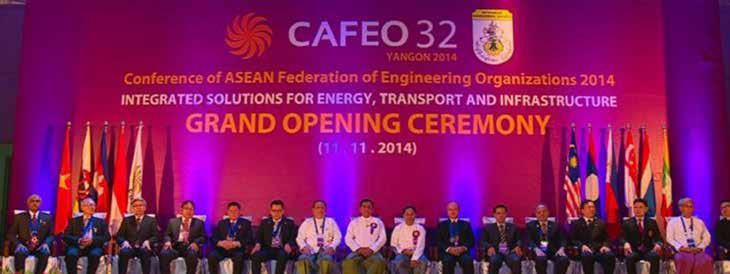
infrastructure. Over 500 engineers from different countries attended the event, all coming to share and learn expertise and experiences in the following topics: infrastructure development in transportation & energy; ASEAN connectivity, infrastructure development, ICT; urban transport for competitive city; energy cooperation ASEAN power grid, trans-ASEAN gas pipeline; renewable energy sources: solar, wind, biomass, bioenergy; rural electrification development ;engineering and technology for infrastructure development; engineering education, research and innovation.
Engr. Thaung Htut Aung, Deputy Projects Director, AIT Consulting, presented a paper on “Case Study: Performance-based Design of Ductile Core Wall Building.” While in Myanmar, Engr. Aung also visited AIT Consulting’s projects together with AIT Consulting consultant Mr. Saw Htwe Zaw. They verified the construction status of Diamond Inya Palace Building and Yangon Grand Hotel on 13 November 2014.
CSI and ASEP Organizes the Theory and Practice of Performance-based Design in Manila, Philippines

ASEP officers and members with Ashraf Habibullah, President and CEO of CSI and Syed Hasanain Muzami, Executive Vice President, CSI especially in earthquake-prone country like the Philippines. hands-on training on 8 Nov.

The Theory and Practice of Performance-based Design (PBD): The Future of Earthquake Engineering was held on 7 November 2014 at the Crowne Plaza Manila Galleria, Philippines following the request from some members of the Association of Structural Engineers of the Philippines (ASEP) during the PBD Bangkok seminar.
Over 280 participants drawn from public and private sectors comprised of engineers, architects, executives, managers, and directors attended the biggest PBD event in the Philippines organized by Computers and Structures Inc. (CSI) in collaboration with ASEP and Asian Center for Engineering Computations and Software (ACECOMS) at the
Engr. Carlos M. Villaraza, ASEP President delivered the opening remarks.


Engr. Carlos M. Villaraza, ASEP President presented the topic “A Step-by-step Procedure on Performance-based Design of 40-story Reinforced Concrete Building (Overall Procedure)” during the Keynote speaker Ashraf Habibullah, President and CEO of CSI, delivered four-part lectures on the benefits of PBD Asian Institute of Technology (AIT).


Engr. Mir Shabir Ali Talpur, Senior Project Engineer, AIT Consulting and Engr. Thaung Htut Aung, Deputy Project Director, AIT Consulting answering questions during the handson session. Dr. Naveed Anwar, Executive Director, AIT Consulting introduced the keynote speaker Ashraf Habibullah, President and CEO, CSI.
A hands-on session was conducted on 8 November by ASEP and ACECOMS, AIT to provide hands-on demonstration of PBD. The seminar covered topics including: A General Approach in the Determination of Two Level Earthquakes for Performance-Based Earthquake Engineering Design by Engr. Carlos M. Villaraza, ASEP President; A Step-by-step Procedure on Performance-based Design of 40-story Reinforced Concrete Building (Overall Procedure) by Engr. Thaung Htut Aung, Deputy Project Director, AIT Consulting; and A Step-by-step Procedure on Performance-based Design of 40-story Reinforced Concrete Building (Detailed Modeling, Analysis and Evaluation) by Engr. Mir Shabir Ali Talpur, Senior Project Engineer, AIT Consulting.
Eight-Japan Engineering Consultants Inc. (EJEC) visited the Asian Institute of Technology (AIT) on 12 November 2014 to further foster its partner

Led by Mr. Yugi Kotani, EJEC President, the exploratory meeting covered areas of possible collaboration particularly in the field of structural engineering, earthquakes and tsunami, risk assessment, disaster management, infrastructure design, waste management and renewable energy, where AIT shows considerable experience and expertise. EJEC’s main business areas include road and transport planning and design, urban and regional planning, water resources development and water supply, waste man
ship with the Institute. agement, environment, disaster mitigation and facility maintenance, information, instrumentation and compensation, and geo-engineering.
The delegation was in the kingdom primarily to launch EJEC’s headquarters in Thailand and were looking to strengthen relations with AIT to add to EJEC’s generous scholarship grants formally established in September of this year. EJEC officials visited the AIT Consulting office and met with Dr. Naveed Anwar who introduced AIT Consulting’s expertise and services through a detailed presen
AIT Joins Arup’s Future of Rail 2050 Presentation From left: Prof. Somnuk Tangtermsirikul, Director, Sirindhorn Int’l Institute of Technology; Dr. Somprasong Suttayamully, Acting Director, MRTA; Dr. Naveed Anwar, Executive Director, AIT Consulting; Dr. Rithika Suparat, Asst. Governor, MRTA; H.E. Mark Kent, British Ambassador to Thailand; Tawatchai Suthiprapha, Senior Executive VP, Italian-Thai; Sindhu Pulsirivong, Chairman, SMC Group; Timothy Suen, Arup, Director, Hong Kong; Jason Simpson, Arup, General Manager, Thailand
AIT Releases Commemorative Book “AIT Alive at 55” A commemorative book titled “AIT Alive at 55” documenting the Asian Institute of Technology’s (AIT’s) rich fifty-five-year history was launched in November 2014 by the AIT’s Alumni Association (AITAA) Philippine Chapter. The publication was unveiled to the public at an open-air ceremony at De La Salle University in the presence of Thailand’s Ambassador to the Philippines H.E. Mr. Prasas Prasasvinitchai, Chairman of the AIT Board of Trustees H.E. Dr. Subin Pinkayan, and AITAA President Mr. Thanin Bumrungsap, and was later signed by former President of the Philippines HE. Fidel V. Ramos, who is an honorary AIT alumnus and was the keynote speaker at the annual AIT alumni gathering.
tation of several global applications of AIT’s technical adroitness. The attendees of the meeting included Mr. Kotani along with other EJEC officials Dr. Ryoji Isoyama, Executive Director; Mr. Yukiyoshi Kawajiri, Executive Director; Mr. Atsuyuki Nakaseko, Head of International Department; Mr. Kazuo Yakata, President, EJ Business Partners Co., Ltd.; Mr. Sakae Nakamura, Representative Office Manager, Bangkok and Representative Office; Ms. Erina Kan, Engineering staff, International Department; Mr. Taisuke Odera, Representative, Bangkok and Representative and the AIT team comprised of the AIT Vice President for Resource Development Prof. Kazuo Yamamoto, Prof. Pennung Warnitchai, representing the School of Engineering and Technology (SET), and Dr. Gabrielle Groves, Head, External Relations and Communications Office (ERCO).
Nov 2014
world. The presentation focused on the passenger’s perspective on how railway trends will affect

The Asian Institute of Technology (AIT) was invited to attend a special presentation on the Future of Rail 2050 organized by Arup and supported by UK Trade and Investment held on 21 November 2014 at the InterContinental Hotel Bangkok. The Future of Rail 2050, presented by Timothy Suen, an Arup Fellow and East Asia Rail Group Leader, is a thought paper created by ARUP Rail and Foresight + Research + Innovation with relevant inputs from contributors from around the
the way we live, work, and travel in the future.
The event also featured a presentation on the Transit Oriented Planning for the Future by Sam Chow, Director of Consulting, East Asia Transport Consulting, and a panel discussion that focused on the innovations, developments, and connectivity of the future rail in 2050.
Dr. Naveed Anwar, Executive Director, AIT Consulting, one of AIT’s representatives in the event, discussed AIT’s strengths with Jason Simpson who showed interest in AIT’s broad expertise in the region. It was decided that Mr. Simpson will visit the Institute, upon Dr. Naveed’s invitation to further discuss possible collaboration on mutually-aligned areas of interests.
Nov 2014 Headed by editor-in-chief Mr. Joseph Siangho, AITAA Philippine Chapter President, the book’s release was held during the 43rd Board Meeting (GBM) held on 21 November 2014. The book opens with “Building a Dream,” a chapter taken from the book of the same title by prominent Filipino alumnus and Hall of Famer Prof. Ricardo P. Pama. This chapter takes the readers to AIT’s history from 1959 to the present and ends with optimistic messages for the future. The Royal Thai Embassy in the Philippines and the Ministry of Foreign Affairs, Thailand funded the book with the help from a number of private and public sector partners and individual sponsors, including AIT Extension and AIT Consulting.
Thailand’s National Housing Authority Governor Inaugurates AIT Workshop on Innovative and Cost-effective Solutions for Cleaner, Greener, and Safer Communities
The Asian Institute of Technology (AIT) through Habitech Center and AIT Consulting organized a seminar and workshop to share innovative technology solutions for low-cost housing. Carrying the theme “Building Cleaner, Greener, Safer, and Cost-Effective Communities,” the event welcomed over 70 participants from eight countries on 27-28 November 2014 at AIT.
The event brought together over 30 organizations from countries including Bangladesh, India, Laos PDR, Myanmar, Nepal, Oman, Philippines, and Thailand. Participants were comprised of engineers, architects, directors, executives, managers, professors, researchers, and students from the public and private sectors, and universities.
The workshop featured presentations from renowned building and social housing experts including: “Low-cost Housing Challenges and Considerations” by Dr. Naveed Anwar, Executive Director, AIT Consulting; “Technology Solutions for Low-cost Housing Being Used in NHA” by Ms. Sukumaporn Jongpukdee, Deputy Director, Department of Policy and Planning, National Housing Authority (NHA), Thailand; “Regional Practices on Low-cost Housing” by Dr. Ram Tiwaree, Economic Affairs Officer, Sustainable Urban Development Section, Environment and Development Division, UNESCAP; “Interlocking Blocks Solutions and Systems for Low-cost Building” by Gyanendra Sthapit, Director, Habitech Center, AIT; “Design Examples of Low-cost Housing” by Ms. Sudiksha Amatya, Senior Architect, AIT Consulting; “Ferrocement for Low-cost Housing” by Dr. Sun Sayamipuk, Managing Director, S N Service Solutions Co., Ltd.; “The Ecovillage Rating System” by Dr. Atch Sreshthaputra, Executive Committee, Thai Green Building Institute; and “Intact Structures Design Low-cost Durable Ferrocement Housing Systems” by Mr. Owen Waldschlagel, Founder and Designer, Intact Structures Inc.
The second day featured field visits to AIT’s Habitech Center and Ferrocement Park for hands-on demonstration of the technologies covered in Day 1. Visits to onsite Habitech projects including the AIT International School and the NHA project at Baan Eau-Arthorn Rojana were also arranged to illustrate the effectiveness of this homegrown solution. The workshop was presided over by chief guest Mr. Krisda Raksakul, Governor, National Housing Authority (NHA), Thailand, who conveyed his appreciation to AIT and indicated his support towards advancing the concept of sustainable housing development.
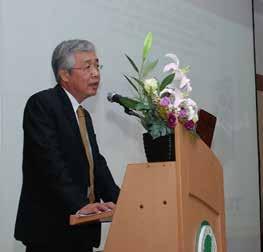

AIT Vice President for Academic Affairs Prof. Sivanappan Kumar delivered the opening address on behalf of AIT President Prof. Worsak Kanok-Nukulchai. As a renowned renewable energy expert, Prof. Kumar emphasized the importance of building clean and green housing for the development of the Asia-Pacific region.
Prof. Sivanappan Kumar and Mr. Krisda Raksakul during the opening ceremony of the workshop.
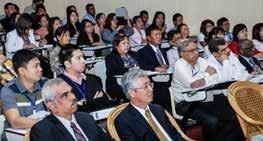

Some participants from Lao PDR and the Philippines
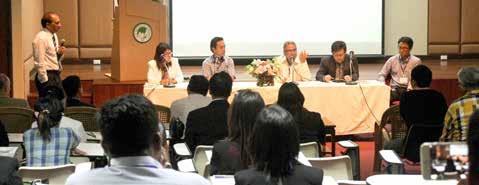
Selected participants from the Ministry of Construction, Myanmar, SCG Thailand, UN-Habitat Nepal, and the India Centre for Public Policy Birla Institute of Management Technology, were invited to join the panel discussion to share their views, experiences, and solutions related to the topics covered in the workshop, together with speaker Dr. Atch Sreshthaputra and moderated by Dr. Naveed Anwar


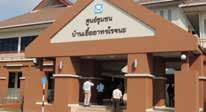
The Aral Sea and Colorado River: Lunar Scenery, Striking Parallels, and Unexpected Lessons for Afghanistan
By Oleg Shipin and Habibullah Habib





